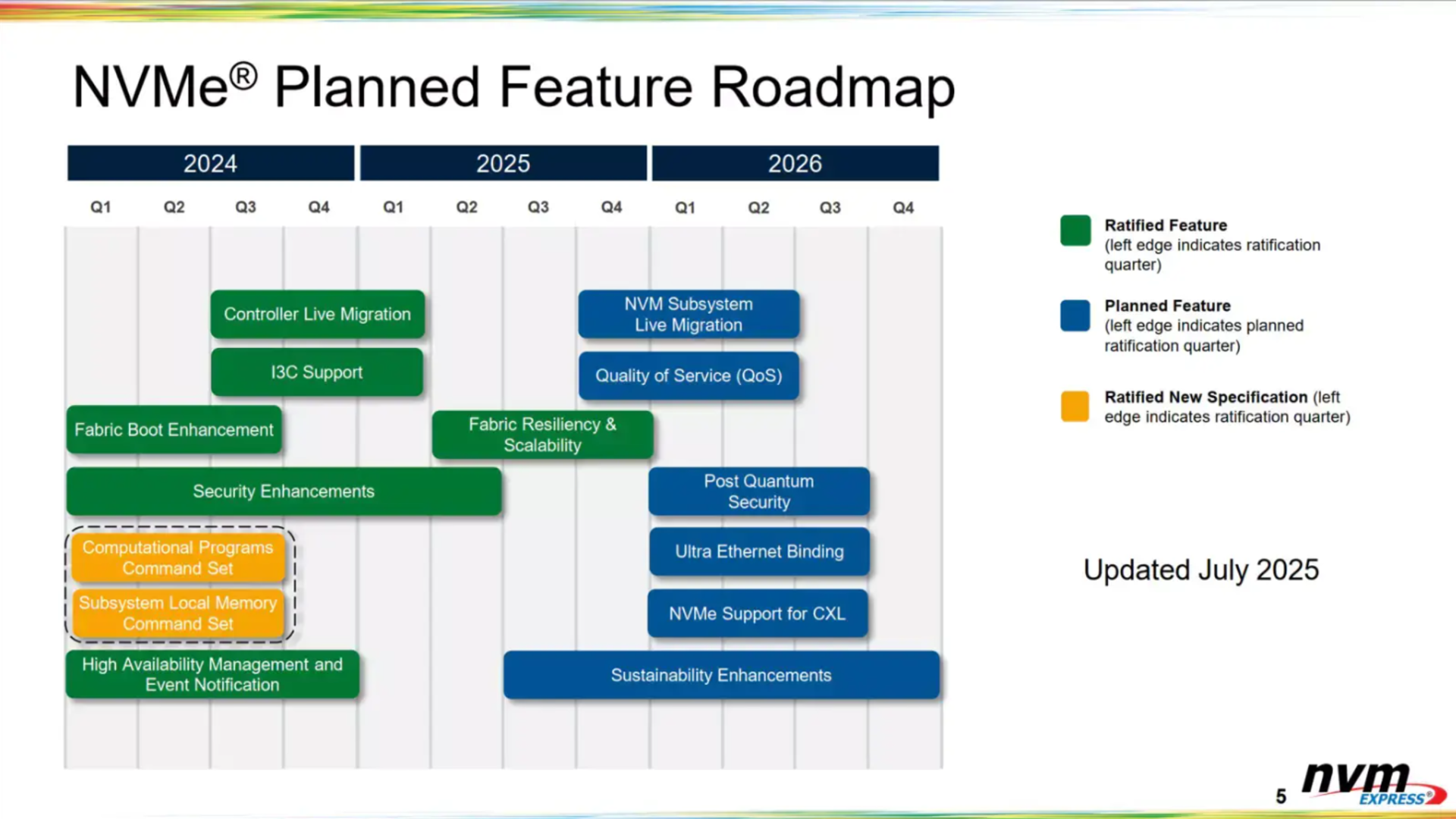- NVMe 2.3 sets new ground rules which could alter storage behavior across multiple environments
- Power monitoring shifts focus toward sustainability and careful control in both enterprise and consumer drives
- Energy capping functions might prevent system stress in older setups that struggle with power draw
The NVM Express group has confirmed the release of NVMe 2.3, a revision that introduces 11 updates across storage command sets and transport protocols.
The changes touch NVM, Zoned Namespace, Key Value, Local Memory, and Compute, while also extending refinements to PCIe, RDMA, and TCP.
Alongside this, the NVMe Management Interface advances to version 2.1, and NVMe Boot moves to version 1.3.
Shifts in power control and monitoring
NVM Express says the purpose of this upgrade is to make solid-state drives more reliable, flexible, and energy-conscious.
In terms of power management, the new Power Limit Config function allows administrators to cap energy draw from an NVMe device.
This can prevent strain in older servers or in setups where consumption needs to be tightly monitored.
In addition, a Self-Reported Drive Power feature lets storage devices reveal usage levels in real time or across longer intervals.
Such reporting may help in capacity planning, early fault detection, and in keeping overall consumption within sustainable levels.
These features may be useful, but their practical benefit will rest on whether manufacturers implement them consistently across both the largest SSD models and portable external SSD units aimed at consumers.
Security changes also appear in the specification. Sanitize Per Namespace makes it possible to erase a defined portion of the drive while leaving the rest intact.
This may help in environments where parts of a drive are being retired or reassigned while other data remains active.
Another addition, Configurable Device Personality, lets an SSD shift operating modes depending on requirements, such as favoring speed or conserving power.
This could reduce the complexity of managing storage arrays, yet questions remain about how often real-world deployments will need such tuning and whether vendors will expose this level of control to users outside enterprise settings.
Rapid Path Failure Recovery is another headline change. When the connection between the host and the storage subsystem falters, the system can now redirect commands through an alternate path instead of failing outright.
The goal is reduced downtime and fewer errors from repeated requests.
For organizations running large clusters or managing the best rugged SSD options in field conditions, this could mean greater resilience.
You might also like
- The most exciting printer design I've seen in years reminds me of a vertical Panasonic printer
- Check out our pick of the best secure routers on offer
- We've rounded up the best portable monitors available now










 English (US) ·
English (US) ·